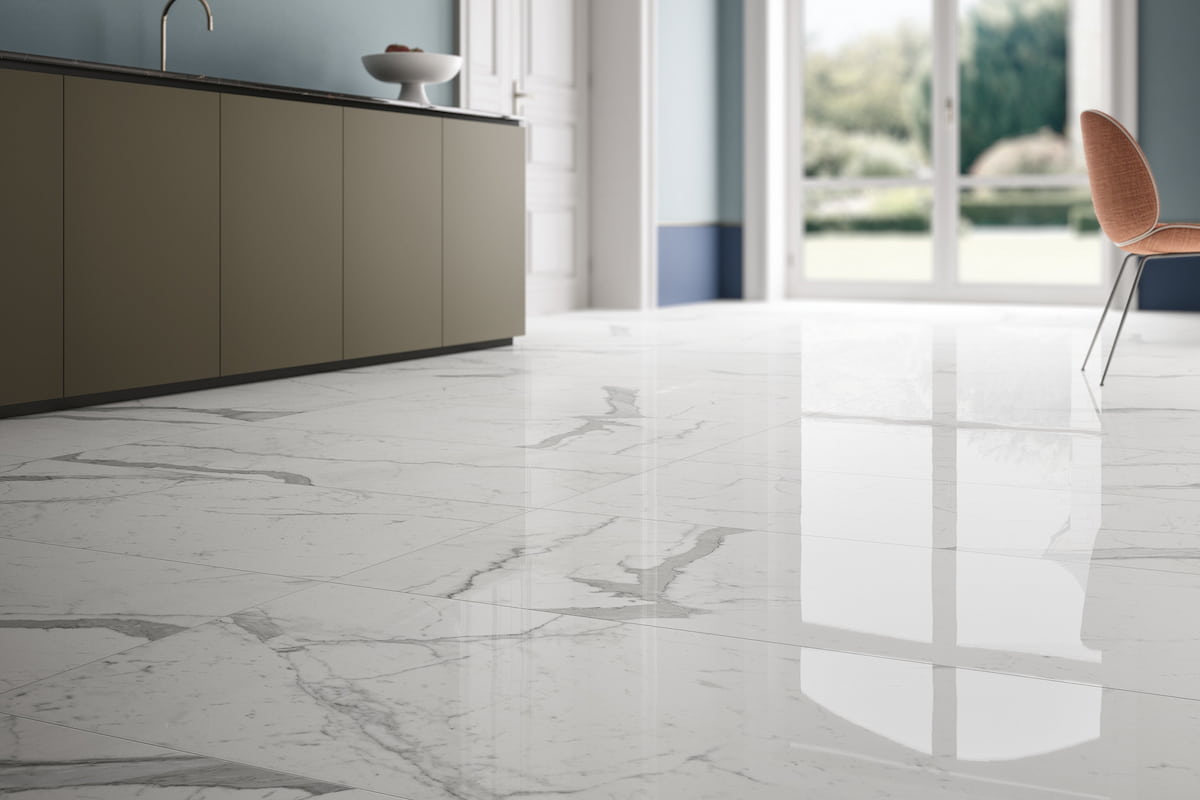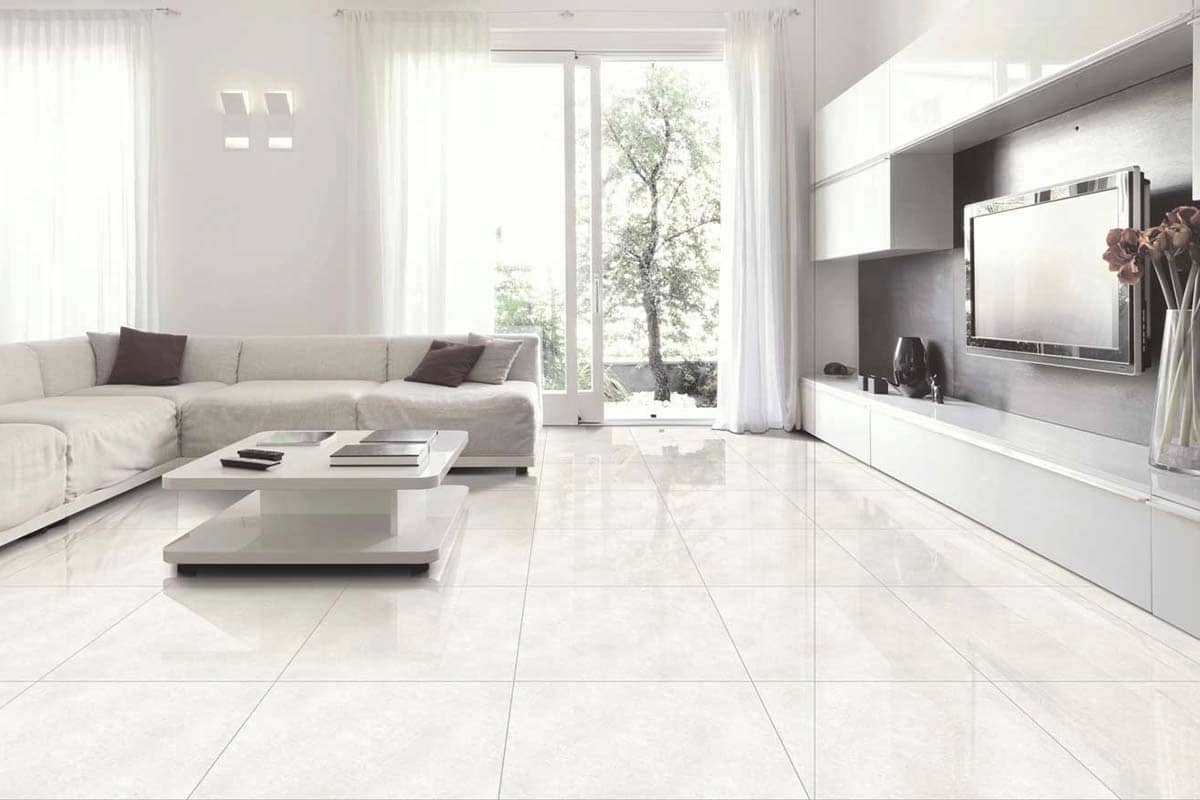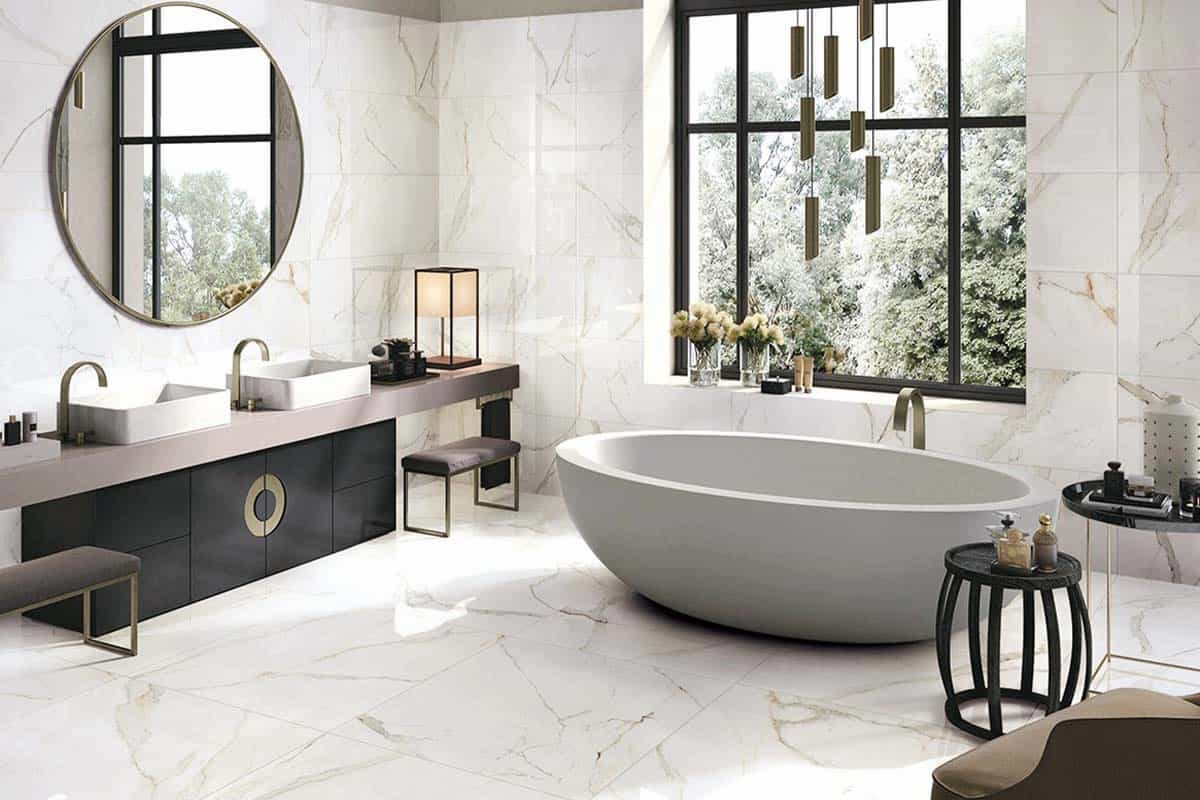The standard argument is that porcelain polished paver tile in the bathroom is not slippery when wet, which is an oversimplification. However, the truer statement is that several circumstances influence it. In addition, what a homeowner may perceive as "slippery" does not necessarily correspond to the rather clinical idea of slip resistance when one examines the technical definition of slip resistance and the formal testing that define this concept All porcelain and ceramic tile manufacturers subject their goods to a battery of tests to determine the slip resistance of their tiles. A pendulum test, for instance, mimics the manner in which a heel contacts the floor. In addition, there are ramp tests (such as DIN 51130, DIN 51097 (barefoot), and BS 4592) in which the results are presented differently. Everyone is aware that each shoe has a distinctive sole, with some materials functioning better in dry weather than in wet ones on smooth terrain.

All standard testing is done under extremely stringent guidelines that cannot possibly duplicate the whole spectrum of scenarios that a homeowner may face when stepping on a wet porcelain paver. Due to this, the American National Standards Institute (ANSI) developed numerous standards that attempt to classify sliding potential on a particular surface into three categories: "lower likelihood of slipping," "growing likelihood," and "higher likelihood." Without getting too scientific, porcelain paver manufacturers in the United States normally test their goods according to ANSI A326 3 The Dynamic Coefficient of Friction (DCOF) of Hard Surface Flooring Materials: American National Standard Test Method. Pavers must achieve a score of >0.40 on the DM236/89 B.C.R.A. DCOF in order to pass this exam. It is important to note that even in this document it is stated that many factors influence the likelihood of a slip occurring on a surface, such as the material of the shoe's sole, its degree of wear, the type, and presence. of surface contaminants on the paver, the speed and length of a person's stride at the time of the slip, whether the paved surface is flat or inclined, and how effective the drainage is on the surface of the paver, among other factors. The ANSI test makes no claim to relate to actual footwear or how a person moves on a surface; it is based exclusively on the use of an SBR rubber test "foot." Essentially, resistance is measured by dragging a rubber foot across a damp surface for a set distance. The surface of porcelain pavers is subject to a meniscus effect, similar to that of glass, which prevents surface water from draining completely.

A porcelain paver may retain a tiny layer of water until it evaporates or the edge meniscus is broken under these conditions. Unlike ceramic or porcelain patio tiles, porcelain pavers are often manufactured with a rough surface that is molded or pressed into the surface of the paver prior to the fire. The degree of relative smoothness or roughness of this textured surface varies significantly throughout a manufacturer's product line and is mostly determined by the specific paver design the company is attempting to create. The problem for consumers is that comparing paver manufacturer specs seldom provides a meaningful indication of the slip resistance offered by one paver vs another. Instead of providing an exact figure, the vast majority of manufacturers just say that a certain paver passes the appropriate slip resistance test. There are advantages and disadvantages to using porcelain pavers in any environment, but they are designed specifically for outdoor usage since they are far thicker than standard interior tiles. They are less prone to fracture or shatter because they are thicker. They may also be employed for elevated rooftop decks, as they just require height-adjustable pedestals at each corner. Therefore, they are suited for outdoor use in the majority of circumstances. As with any product, the design limitations and technical requirements of porcelain pavers must always be considered in relation to their intended use. There are compounds that may be applied to the surface of porcelain pavers to increase their grip and slip resistance if you're worried about aquaplaning or slipping and falling on them during a rainstorm, which could result in injury. Popular anti-slip additives include somewhat acidic, which softly etches the surface to promote traction between pavers and shoe soles. However, as predicted, it is ineffectual when porcelain pavers are coated with snow or ice. This treatment may be utilized to increase the coefficient of slip resistance of dry and wet porcelain pavers. In such situations, porcelain pavers may become slick regardless of their surface treatment. If you plan to place porcelain pavers around a pool, you should get pavers with a rougher surface.

If you're contemplating utilizing limestone, sandstone, or travertine pavers, natural travertine is unquestionably more water-absorbent than porcelain pavers, but it's also more susceptible to moss and mold. Nevertheless, it will likely be less slippery, which is a benefit.چ If you are concerned about these disadvantages of travertine, you should know that travertine-like porcelain pavers are now available in colors and styles that approximate the look of authentic travertine while being entirely stain-, mold-, and moss-resistant. Unless you work in a laboratory, engineering office, or academic setting, the last time you likely used the term "coefficient" was in high school mathematics. However, it is essential to understand the coefficient in relation to hardscaping materials and motion if you are purchasing flooring for your house. There are two numbers involved since this is a coefficient. How these two variables relate to one another determines slip resistance. A number represents the horizontal force necessary to move a surface (such as a shoe) across another surface (such as tile flooring). The second illustration depicts the force between the two surfaces. Having greater COF slip resistance levels is better than having lower ones. COF readings generally range from 0.3 to 0.6 for clean, dry items rubbing against one another. The coefficient of friction between two highly slippery objects may be as low as 0.04, with zero representing the complete absence of friction.

Natural stone can be honed and polished to the point where it resembles glass. At the first sight of precipitation, big public and commercial buildings with highly polished granite or marble floors install mats. At the opposite end of the range, terracotta tile, quarry tile, and route brick all have high COF values. The tile industry voluntarily submits its products to slip-resistance tests conducted by independent laboratories. The Tile Council of North America's newest test, DCOF AcuTest, is designed to simulate real-world conditions more closely than previous tests. Over time, tests have evolved. The most current test exclusively assesses dynamic slip resistance, while the previous test also evaluated static slip resistance. Static resistance is the amount of force necessary to induce motion between two stationary surfaces. A person standing stationary on an incline is an illustration. Dynamic resistance refers to the amount of force required to keep two already-moving surfaces in motion. An example of this is a person walking onto a tile after stepping onto a surface. If you need to know more about the slippery surface of polished porcelain tiles, you can contact our sales managers and receive more information.
